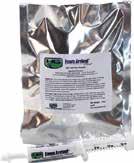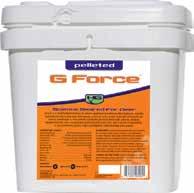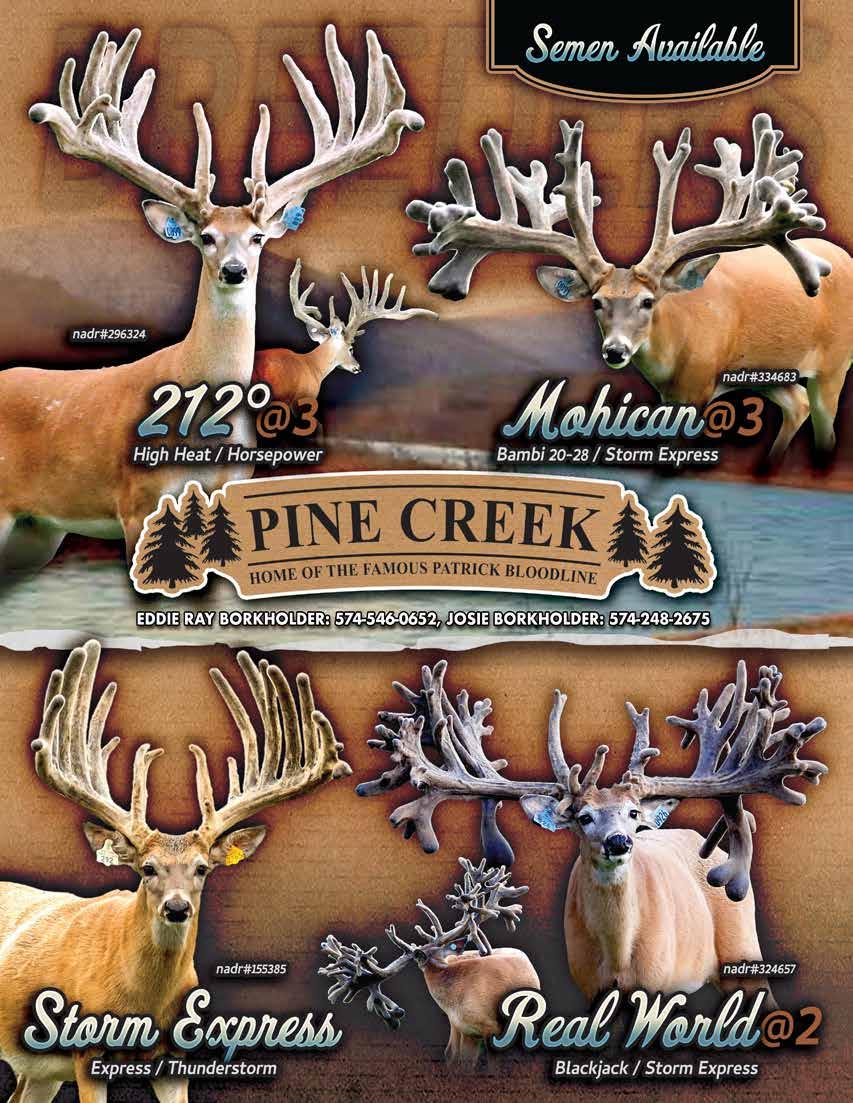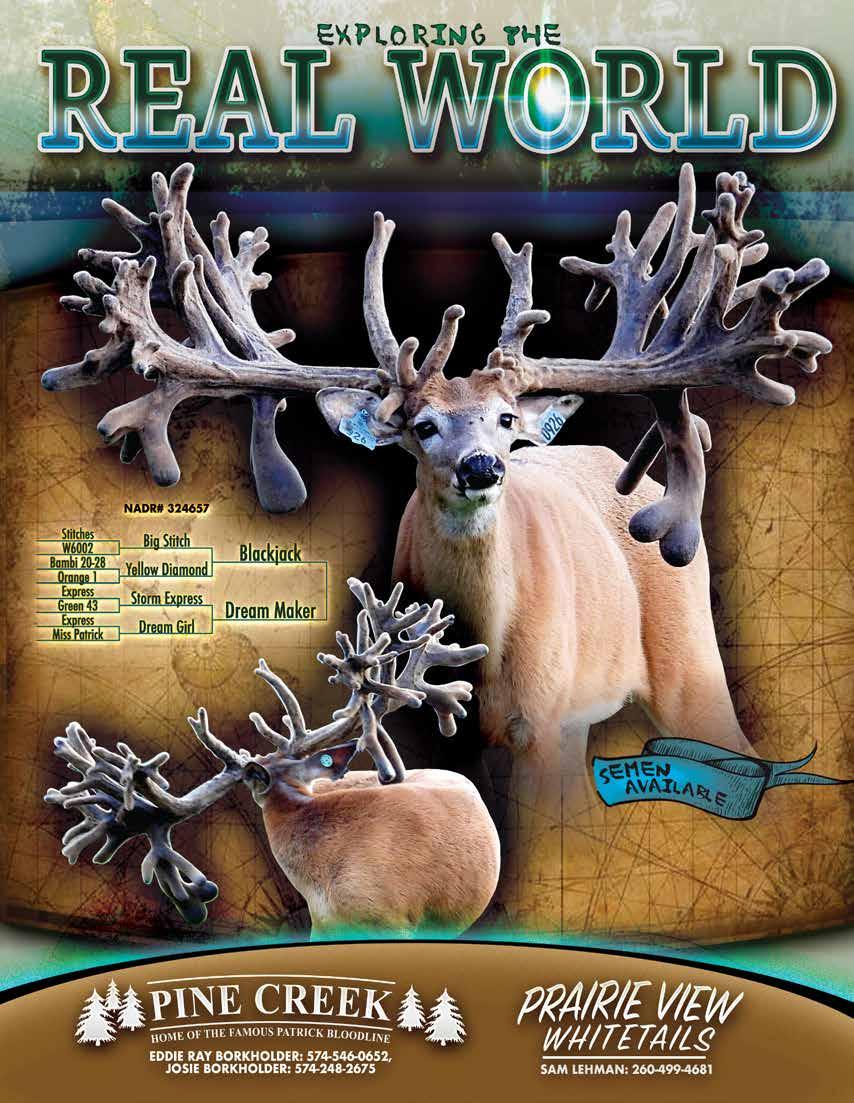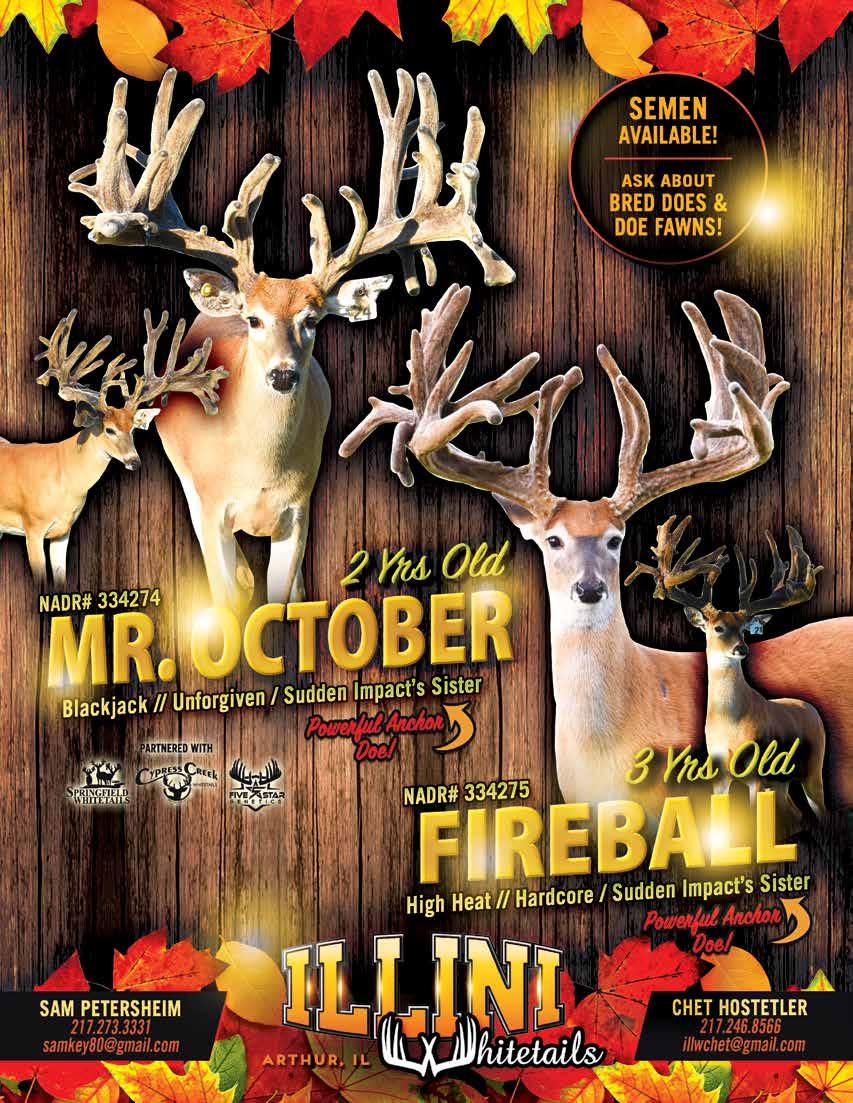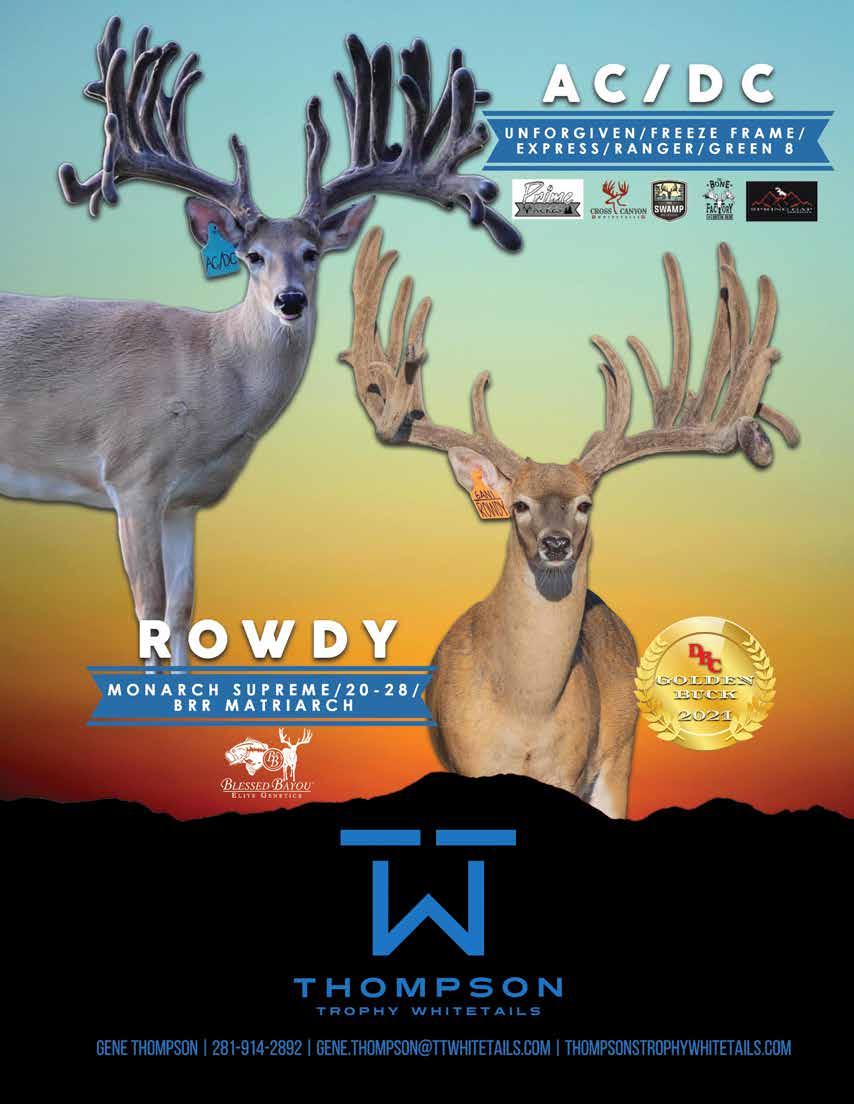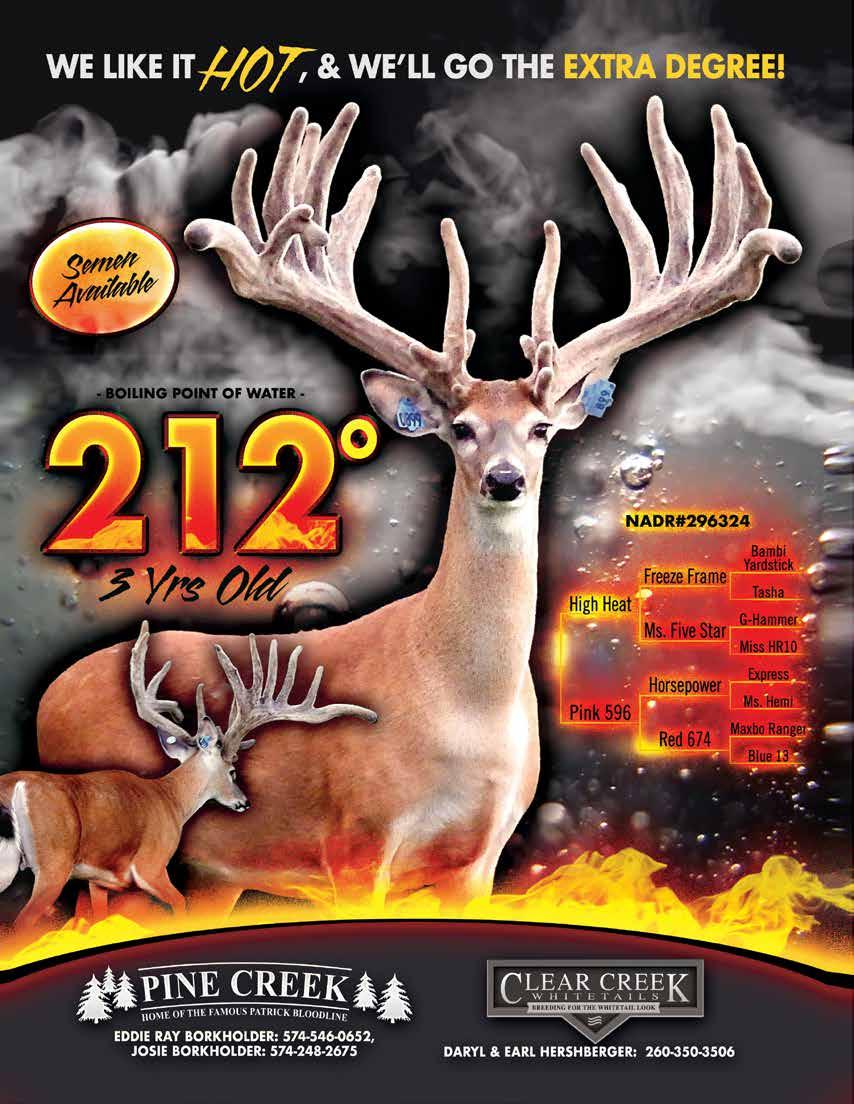






























Dave Vanderzee
Easton View Outfitters 518-210-8889 eastonviewoutfittersllc@gmail.com
Four Season Whitetails 315-783-2848 fourseasonwhitetails@hotmail.com
Moriah Elk Farm 607-657-8069 rootnyelk@aol.com
Tom Peryea 518-561-3555 tomselkranch@juno.com
French Creek Whitetails 570 Maple Ave Clymer, NY 14724 716-355-8870 timrater21@gmail.com
MIKE ROSENWIE
Concord Whitetail Scents 12495 Kern Rd Springville, NY 14141 716-912-7314 rosey9473@hotmail.com
Prime Whitetails 336 Woodruff Rd Rush, NY 14543 585-330-9100 mike@primewhitetails.com
Valley View Whitetails NY 4496 RT 241 Randolph, NY 14772 716-499-9367 whett6@hotmail.com
JB Farms 143 Beach Hill Rd New Ashford, NY 01237 413-822-1040 dan.jennings02@gmail.com
FEATURED ARTICLES: Act Promptly to Treat Damaged or Infected Antlers
Increasing Fawn Success–
Increasing Fawn Success – Advice from Experienced Experts
Offering Good Advice and Hope to all New York State Deer Farmers
The North American Deer Registry –Continuing to Improve Technology to Validate the Cervid Industry

Youth Hunting – Fueling Passion for the Outdoors
IN EACH ISSUE
Advertising Information 10 Business Card Advertising 10
Membership Application 13
ADVERTISERS INDEX
5 Star Genetics ............................................ 18
AR&R Antler Replica & Repairs 6
Blessed Bayou ............................................ 17 C&E Wildlife Products 6 Cervid Solutions, LLC .................................... 3 CuddliEZ In. F. Cov.
Dan-Inject North America 2 EZid, LLC 16
Head Gear, LLC 25 Hilty Whitetails 11 Illini Whitetails 28 Jo Jo’s Whitetails 9
MAGAZINE GRAPHIC DESIGN AND PUBLISHING: D & K Design 305 E. 350 N., Ivins, UT 84738 deerassociations@gmail.com P) 435-817-0150 (Editorial Provided
NADeFA Convention In. F. Cov.
NexGen Compounding 23

Pine Creek Deer Farm 26-27, B. Cov.
Pneu-Dart, Inc 21
Prime Acres Whitetails 7
Purina 19
Sunrise Supply, LLC .................................... 16
Thompson Trophy Whitetails In. B. Cov.
Trophy Whitetails ........................................ 22
Whetstone Brothers 12
Woodard Whitetails....................................... 5
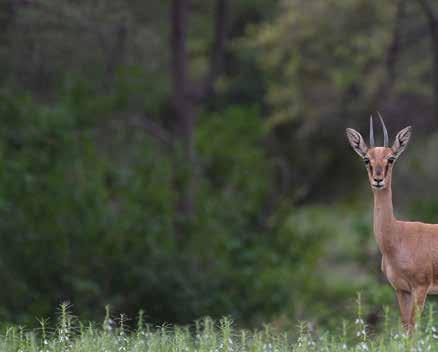
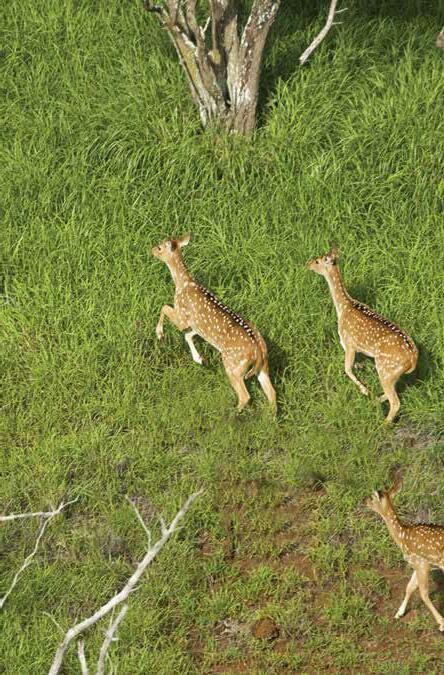
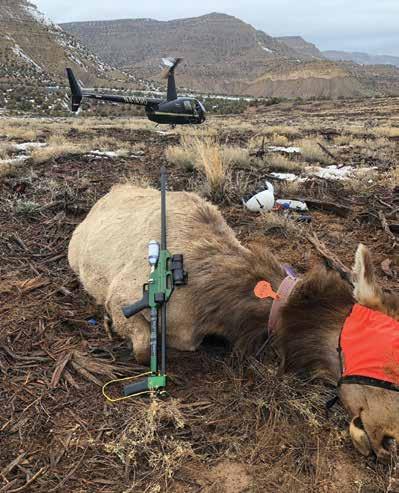
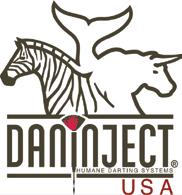



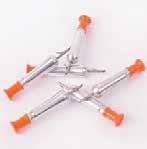











As the deer industry evolves, the North American Deer Registry (NADR) is evolving right along with it. Begun in 2007 to validate the industry by providing information on DNA and pedigrees, NADR, located in Edmond, Oklahoma, is now incredibly specific with the information it provides. In the summer of 2021, new CWD Genetic Assay Technology (investigative procedures that measure the presence of a targeted entity) was introduced and is currently utilized using approximately 50,000 genetic markers. This new assay provides Genetic Estimated Breeding Values (GEBV’s) to allow breeders to determine each animal’s susceptibility to CWD and make future breeding decisions in order to “move away” from this disease.
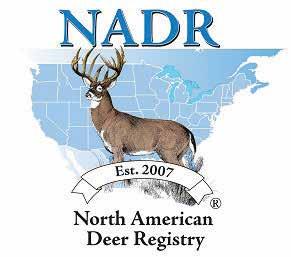
This CWD technology was only a dream when NADR, in its infancy, studied 18 markers merely for the construction of simple, non-disease related genetic maps for parentage. “The technologies then were very rudimentary and had been around for years in the cattle and sheep industry,” said NADR Executive Director Gary Cook. “They focused primarily on pinpointing the most accurate DNA analysis possible at the time.” As DNA technology advanced and NADR partnered with Dr. Chris Seabury and Texas A & M to license technology that shifted the focus to genotyping and identifying SNP molecular markers found in DNA, it resulted in 400 identifying markers utilized for parentage in whitetail
and mule deer. In addition, in 2016, NADR selected a new organization, Neogen (Geneseek), with state-ofthe-art laboratories all over the globe including Lincoln, Nebraska, to facilitate the transition to this new technology. To date, NADR has tested 350,000 fallow, mule and whitetail tissue samples combined, with a goal of providing official pedigree services for fallow deer later this year. Having a NADR registered deer doesn’t merely provide a handy reference for pedigrees, breeding values or breeding decisions. It’s a necessity should one wish to qualify for a consignment auction or prove their deer’s value to a potential buyer. The efforts of two valued organizations, NADeFA and the Texas Deer Association (TDA), allowed NADR, a 501c4 organization, to become a reality. Several years later, Venados De Mexico (VDM) joined as an organization. NADR is comprised of a team of dedicated scientists and office administrators as well as a 14-member volunteer board, five from NADeFA, two from VDM, five from TDA as well as NADeFA Executive Director Shawn Schafer and TDA Executive Director Kevin Davis. To become a NADR customer, one must first be an active voting member of the TDA, NADeFA or VDM and submit DNA samples to NADR in tissue tubes. Samples could include pulled (not shaved) hair between 30-50 millimeters long from the underside of the tail, an antler core from the base of a shed antler, semen straws or used semen straws with the cotton plug still intact. Sample
submission options include an excel spreadsheet, GMS software or manually. Cook emphasizes shipping samples that will arrive on a weekday, and to include with your sample all possible sire and dam NADR numbers including A.I. and backup bucks.
NADR, who tests on average 25,000 deer per year, sends certificates to owners once results are completed. All results are confidential and available online. However, no one but NADR and its members have access to the results.
“We work very hard to offer the best in a genetic registry,” Cook said. “We continuously seek ways to provide knowledge and state of the art services to our customers.”

Reach NADR staff by calling 405-5137228, faxing 405-513-7238, sending an email to nadr@deerregistry.com or visiting their website at www. deerregistry.com.
NADR is located at 1601 Medical Center Drive, Suite 1 Edmond, OK, 73034
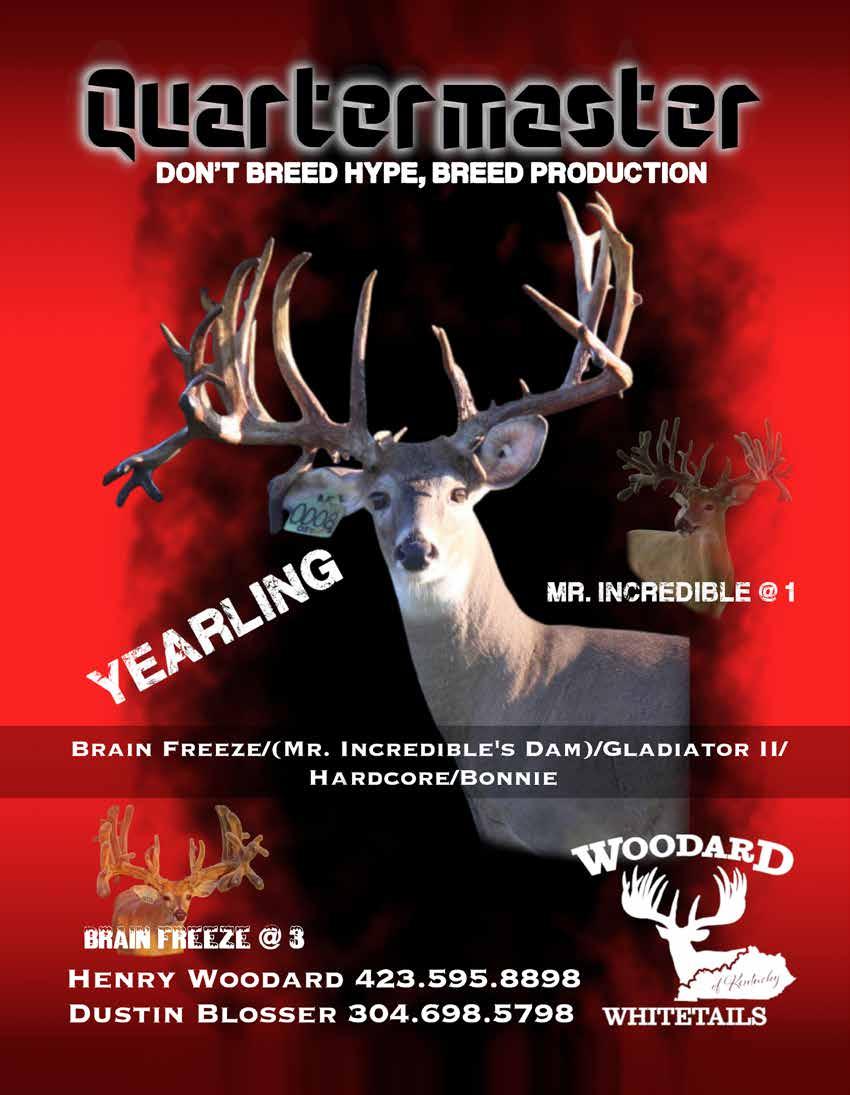


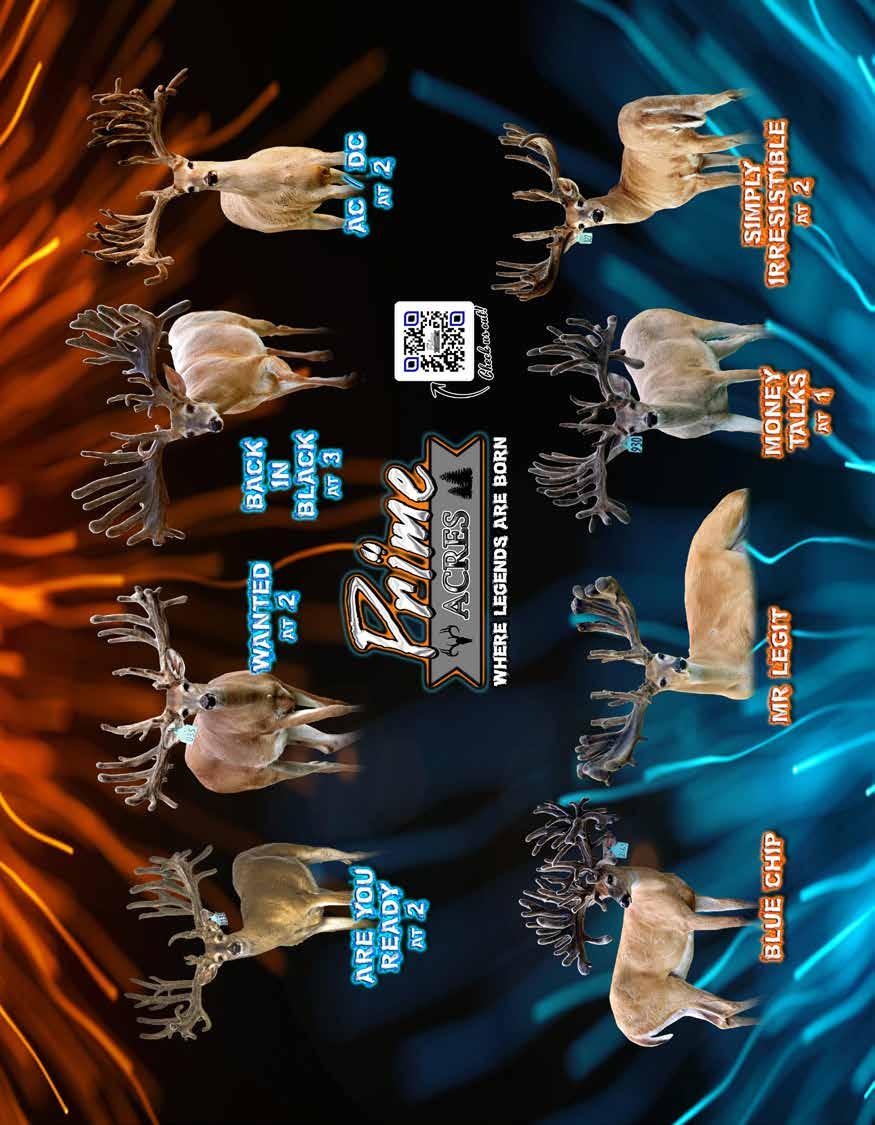
owner of Custom Pro Friction Calls and the man who taught Glenn to turkey hunt. After hearing about Archer’s first hunt, he surprised Glenn with a picture of Archer holding his first turkey, along with a personal inscription for Archer. In sharing a love of the outdoors with Archer and his other young son Lincoln, 9, Glenn, 53, feels “it’s paramount to appreciate nature and spend time with them outside. There’s not a better morning than being out in the woods. It’s my favorite time of day.”
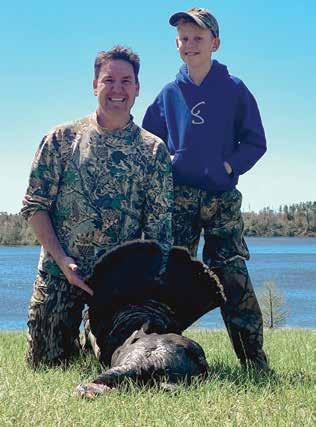
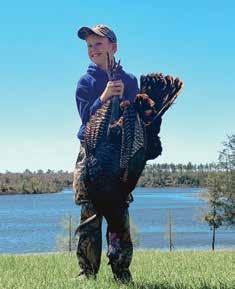
This enables us to enjoy year-round family-centered outdoor activities and to also be deer enthusiasts,” he said. “This involves working together as associations and staying abreast of current regulations and any proposed changes that affect us and standing up for our rights and practices of land ownership, management and stewardship.”
“Now whatever you do, don’t blow up Dad’s new decoy,” Glenn Dice affectionately told his young son Archer as they called in turkeys and waited during a spring 2021 hunt in their home state of Pennsylvania. When a big curious, striking gobbler checked out the decoy then stepped a few feet away, Archer, then 10, took his first shot ever as a hunter. Bingo. The victorious turkey hunt was followed by one in Florida this past spring and yet one more a month later back in Pennsylvania with another father and son. As the four eagerly waited in the cool predawn, competitive gobblers soon came running in, yet Archer appeared to hesitate. “Why aren’t you taking a shot?” Glenn whispered. “I don’t want to shoot your decoy,” Archer replied. Glenn quickly responded, “I don’t care about the decoy just shoot the darn turkey!” And with that, Archer’s aim was triumphant. He was the only one in the group to harvest anything that day.
The three bullet shells responsible for harvesting those three turkeys, each inscribed with Archer’s name, are kept on Glenn’s desk. He’s not only thrilled that his son shares one of his favorite pastimes, he’s also proud of his love of nature and the outdoors. Sharing that pride along with Glenn is Jeff Graham,
Nationally, hunting is a multi-milliondollar industry responsible for substantial annual revenue. In 2021, revenue from hunting licenses was reported at $902,356,898, a $3 million increase from 2020. The top six states for issuing hunting licenses are typically Colorado at approximately $59 million followed by Texas at $47 million, Wisconsin at $41 million, Minnesota at $39 million, Pennsylvania at $37 million and Michigan also at $37 million. Even the tiny state of Rhode Island registered 26,690 hunters in 2021.
The most popular and number one animal to hunt is a whitetail deer followed by turkeys, elk and bear. While the interest in hunting is showing no signs of slowing down, without youth remaining interested in nature, hunting and the outdoors, subsequent decades may tell a different story. Vigilant deer farmers and preserve owners in Pennsylvania and in other states have a responsibility to ensure future generations embrace this same love, Glenn emphasized. “Being involved allows you to share your passion for the outdoors as well as collaborate on regulation development.
While Archer is poised to perpetuate this philosophy, he has yet to hunt whitetail, partially due to the fact that they are raised on the family farm, Glenn Dice Farms in Chambersburg. However, he has expressed an interest in trying. After they explore whitetail hunting sometime in the near future in Pennsylvania, Glenn and Archer may plan a Utah vacation to hunt mule deer. In the meantime, Glenn is working steadfast to maintain a constant presence in Washington on behalf of deer farmers, and to give back to an industry that has been so good to him and his family.




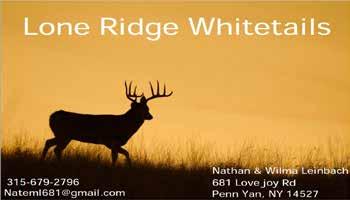
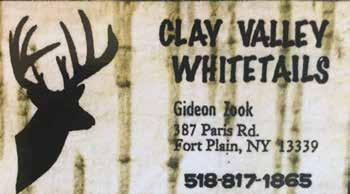

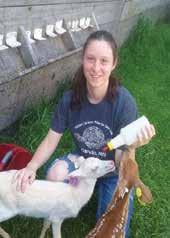
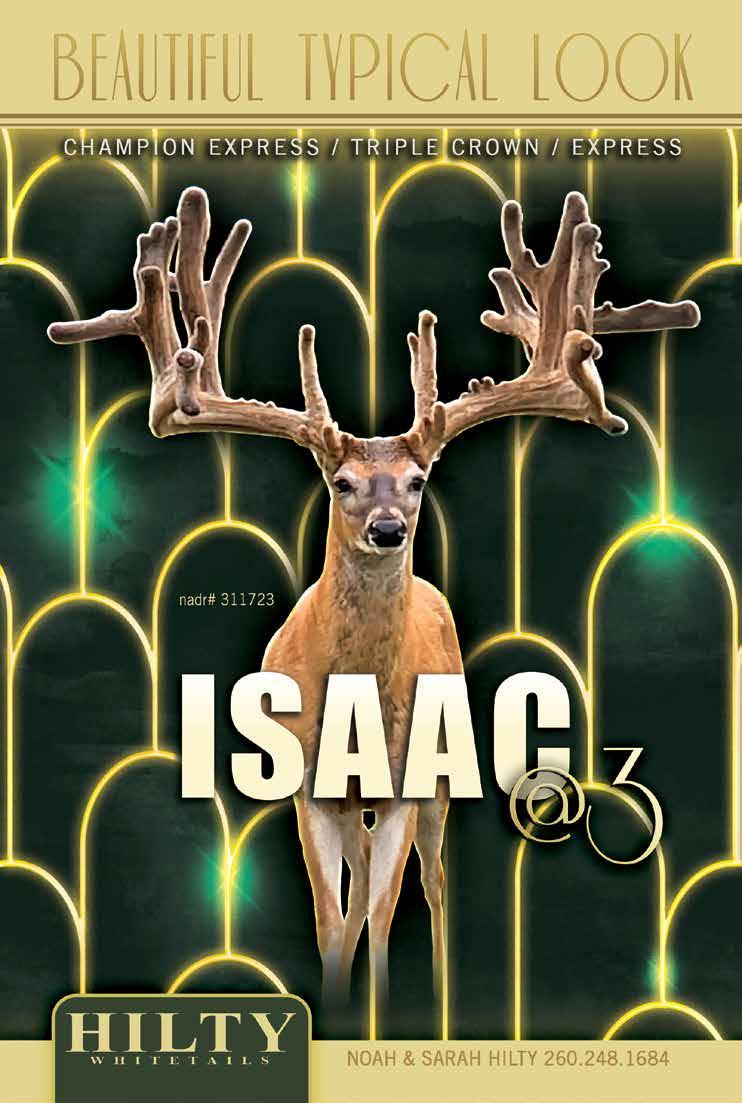
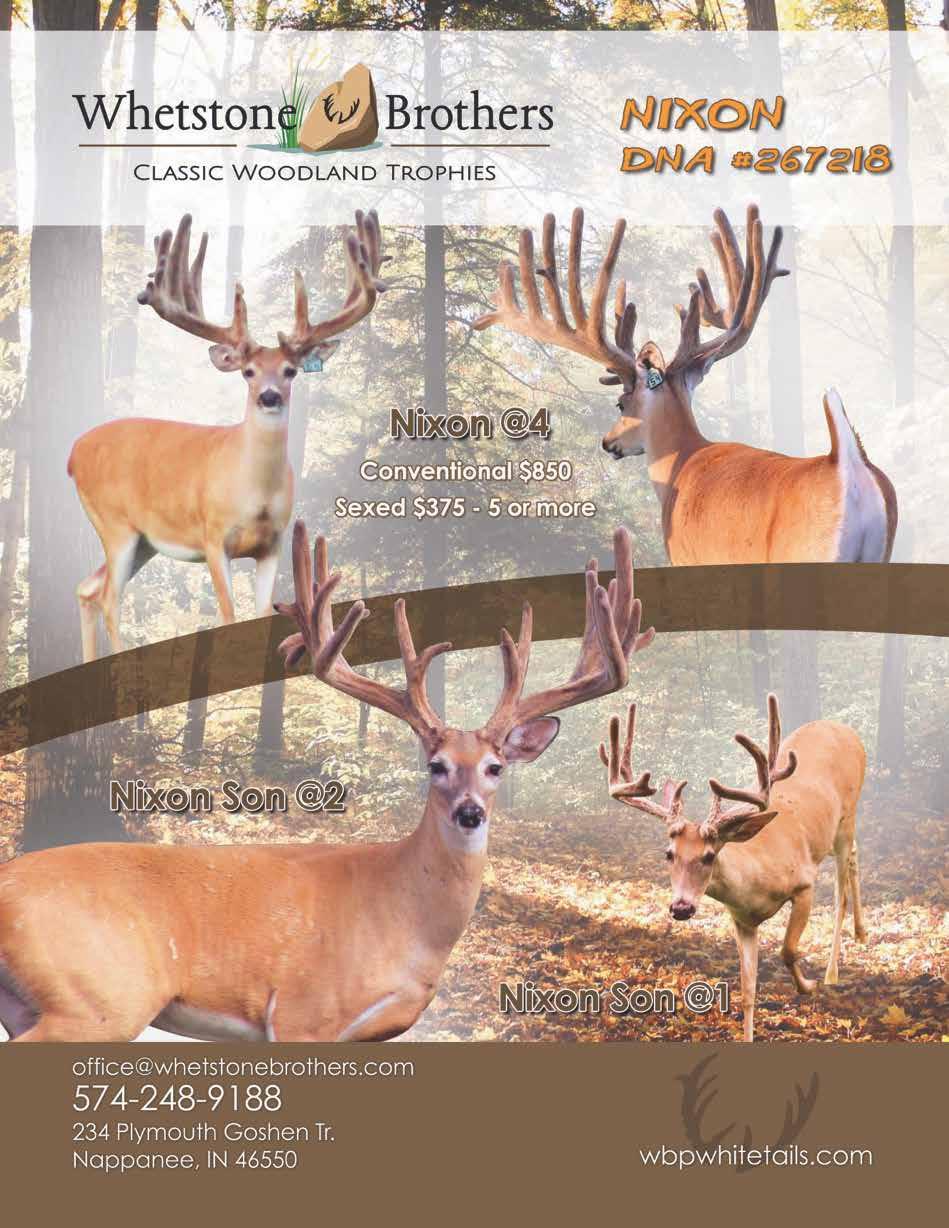
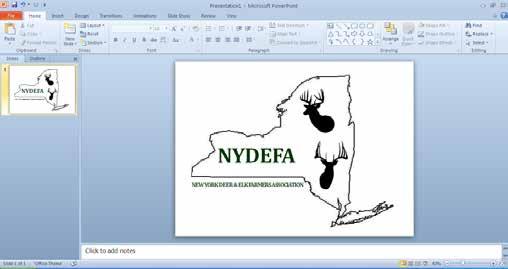
Every deer farmer in the State of New York owes it to themselves to check into tax laws in an effort to fully benefit from them. “If you are going to be knee deep in it, you need to know how you can afford to do it right,” said Dave Vanderzee, president of The New York Deer and Elk Farmers Association. Offering his advice to fellow deer farmers, Vanderzee would like to share his wisdom from his years of running three of his own businesses, as well as the years he has spent becoming as fully educated on the subject as possible.
Given that tax benefits are available to those farmers who are running a business, as opposed to enjoying a hobby, Vanderzee believes farmers should focus on trying to achieve three things: property tax relief, sales tax relief and income tax relief. To this end, Vanderzee strongly encourages all New York deer farmers to investigate the following suggestions, in order to potentially experience a greater profit from their deer farming operation.
Deer farmers should:
• Acquire Publication 225, the Farmer’s Tax Guide, and read it front to back.
• File their taxes under a Schedule F (Form 1040) which specifically focuses on profit or losses from farming.
• Read Form IT-217, Claims for Farmer’s School Tax Credit, to see if you are eligible to receive exemptions from paying school property taxes.
• Review Form RP-305, the Agricultural Assessment Renewal Certification, for eligibility on tax reliefs. Farm acreage and profit are indicating factors.
• Become familiar with the ST-125 Form, addressing commercial farm and commercial horse boarding facilities in the State of New York for potential sales tax relief.
• Review Form FT-1004, Certificate for Purchasing Diesel Motor Fuel or Residual Petroleum Products, for farmers already deemed tax exempt, to determine your potential eligibility.
• Visit with a reputable tax preparer/attorney to make sure they are “turning over every leaf” on your behalf and are fully versed on farming taxation issues.
• Decide whether operating your business is better using a cash method or accrual method.
• Investigate what works for you in terms of withholding more or less taxes during your fiscal year, so your money can go further (or do more for you) by either making more now or receiving a larger tax refund later.
• If you discover you have been missing out on potential tax relief, you can file a 201X Form to amend your taxes as far back as three years.
“This could be the most important magazine article a deer farmer ever reads,” Vanderzee said. “Many people simply don’t know this information is out there and available to them. You might discover life is a lot easier by taking advantage of these benefits.”
NYDEFA President David Vanderzee
Easton View Outfitters
Email: dave@vanderzeefinancial.com 518/210-8889

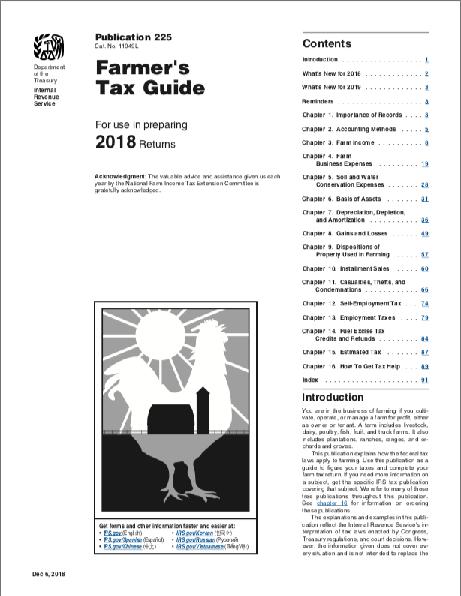

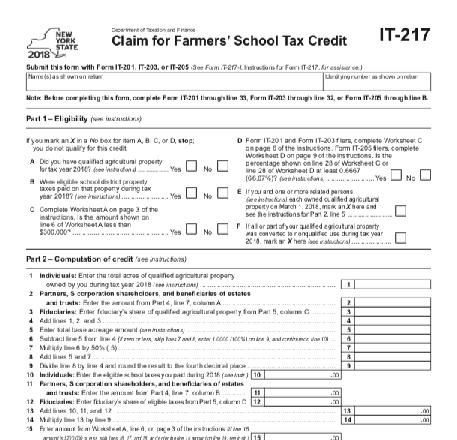
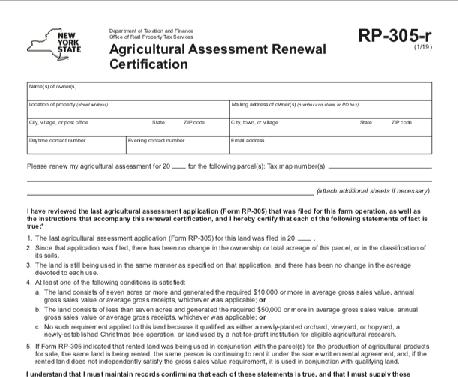
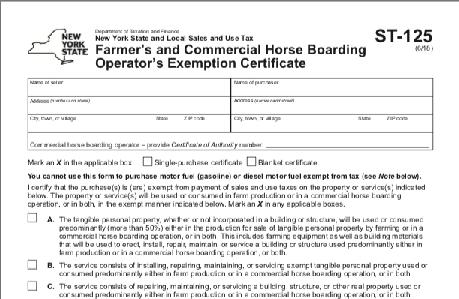
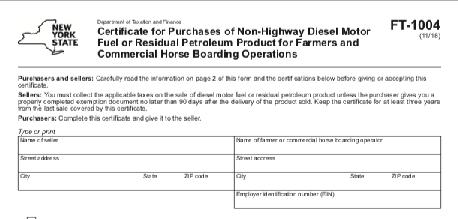



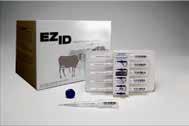
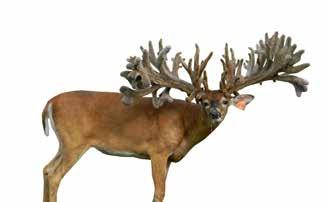

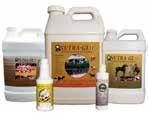

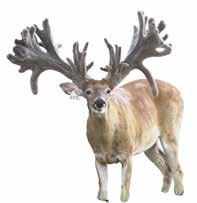
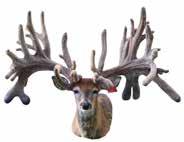



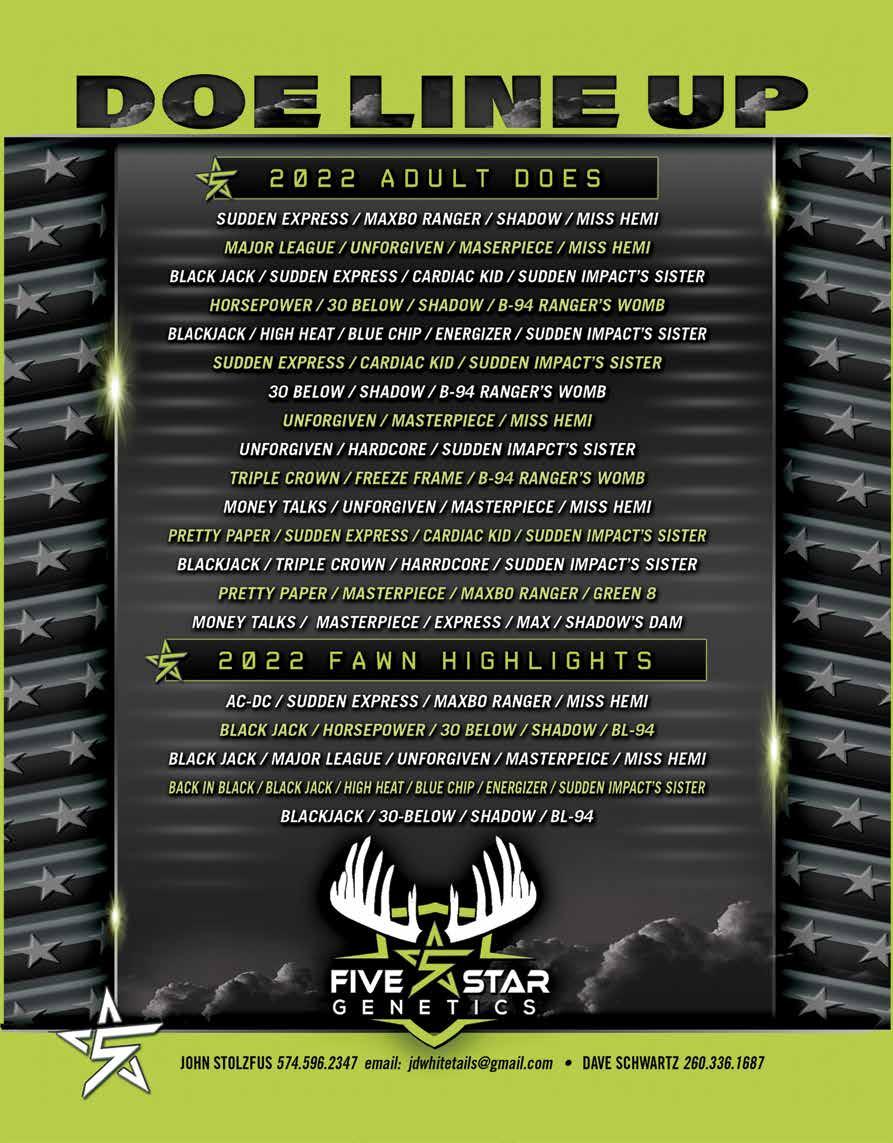

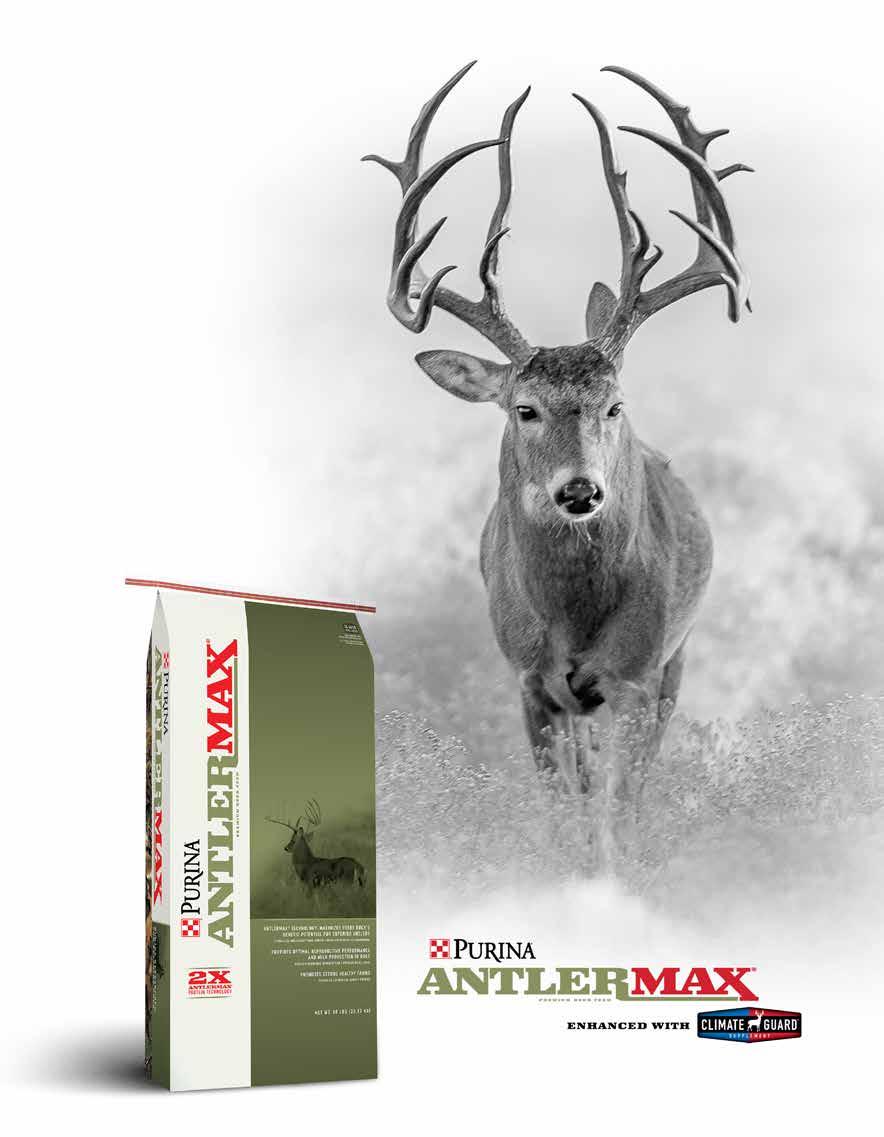

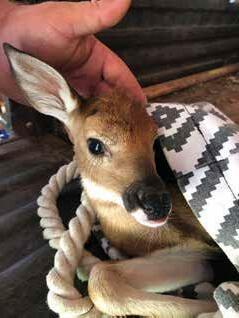
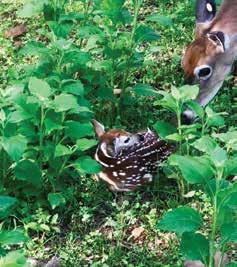 By: Gail Veley • Sponsored by WOO
By: Gail Veley • Sponsored by WOO
Jodi Ezell quietly pauses outside one of her deer pens in the spring twilight, watching and waiting for signs of does ready to deliver fawns. A few does have already started pacing and instinctively creating a safe haven by chasing off other does. However, Ezell is looking for one specific thing as she shares the cool evening with the herd she and her husband Chris raise at Dangerous Whitetails of Oklahoma in Adair, Oklahoma. She is looking for any does with tails lifted and actively pushing, as this starts the countdown for safe fawn arrival. “I give them about an hour of active pushing,” Ezell explained. “If nothing has happened by then, I go in to assist.” Assisting means reaching deep inside the womb, feeling for fawns and helping to pull them out. While an inevitable set of twins is usually the norm, a doe’s history may point to the potential for triplets or quads or perhaps the rare arrival of quintuplets and the necessity to not stop investigating after two.
As these delicate lives receive their first breath of earthly air, Jodi and Chris, who have been through at least 12 fawning seasons, are already taking stock of each fawn and keeping a watchful eye. After 12 hours next to their mother’s
side to ensure colostrum intake, each fawn has hair pulled for a DNA sample, is tagged and given medication. Afterwards, doe fawns and struggling buck fawns are brought inside the Ezell’s bedroom, placed in baby pens and given additional goat colostrum. They will spend the next week receiving a bottle three times a day before being moved to the farm’s fawning facility. Once there, they are introduced to grain as a supplement to their regular schedule of pasteurized goat’s milk, although other farms may opt to bottle feed formula instead. “Around week three we start to feel like their survival rate is more guaranteed,” Ezell said. “By watching them this close for the first three weeks, we are eliminating some of the potential for Mother Nature to do them harm.” This could include the development of scours or even the failure early on to intake enough colostrum to ensure survival.
While fawn arrival may be one of the most rewarding times of the year for deer farmers, it can also be a time when farmers collectively hold their breath as they work to safeguard their health and survival. Although born precocial and able to ambulate practically from the moment they arrive, fawns can also be extremely fragile and may require dedicated care in order to grow into thriving and healthy adult deer.
In addition to proactive fawn care from the moment they arrive, ensuring fawns get the best head start begins with the care of the expecting doe, explains Matt Owens, owner of After Shock deer supplements and Rack Star Whitetails in Sullivan, Missouri. After having been through nine fawning seasons on his farm, his first preparations involve vaccinating all expectant does on March 15th for pneumonia, fusobacterium and clostridium C and D, common cervid
diseases known to cause herd and fawn mortality. A booster shot given on April 5th for each is another safeguard to increase doe antibody levels and allow for the passive transfer of antibodies from mother to baby, he emphasized. “The most important part of preparing for healthy fawns is to have a proven vaccine program and proven feed program for your expectant does,” Owens emphasized. While these measures certainly point to an increase in fawning success “some fawns are still born sick,” Owens said. “Another measure to decrease these odds is to make sure pregnant does also have a good vitamin and mineral program. When you do, fawns are generally born bigger and healthier. Fawns are born with no immune system and not until the 90-day mark do they really develop one. They need all the protection you can give them, including vaccines, until that 90-day mark.”
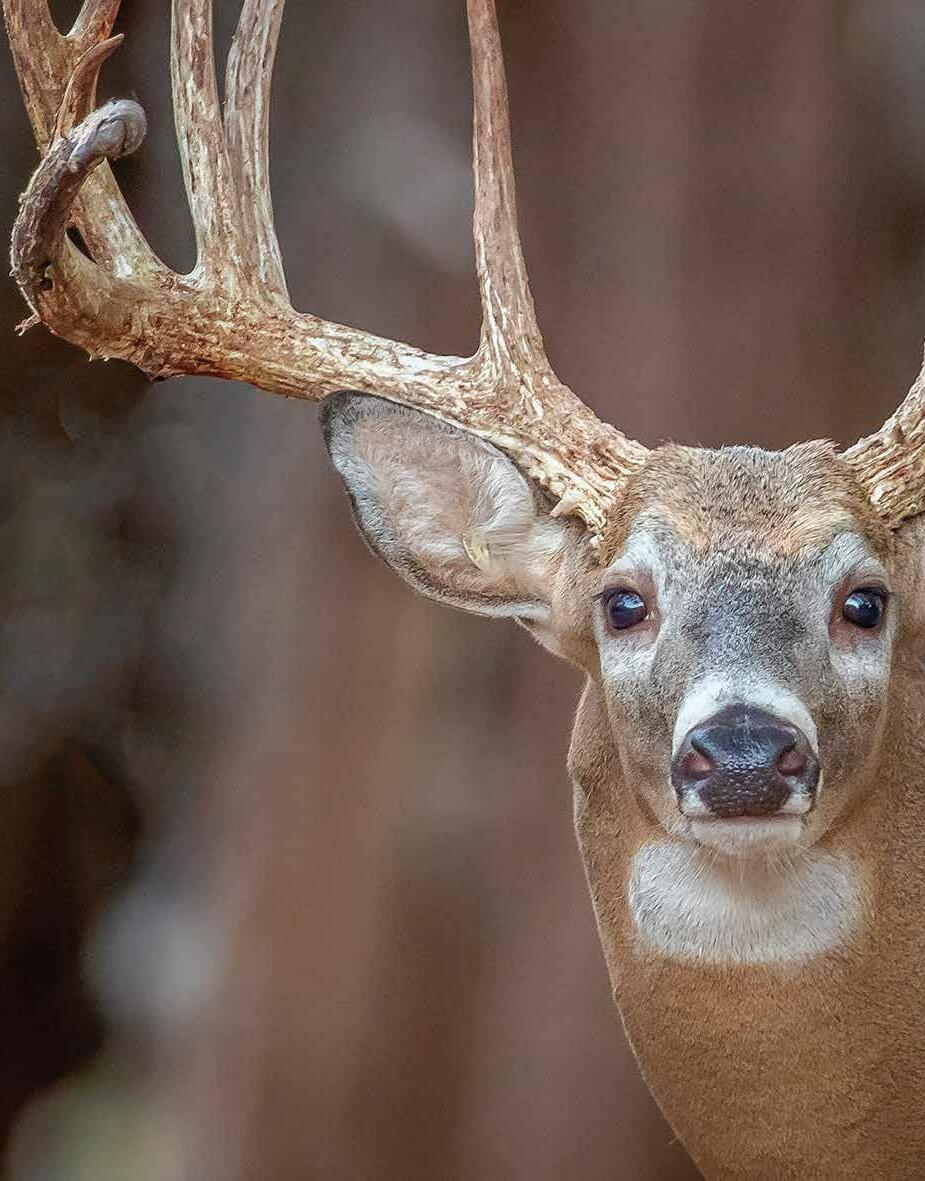

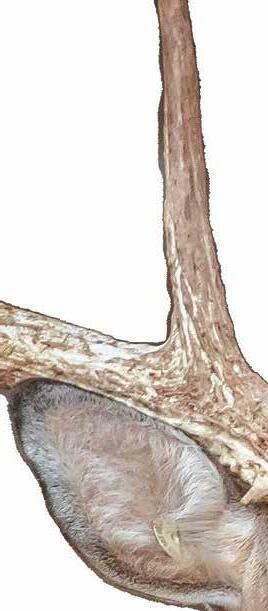
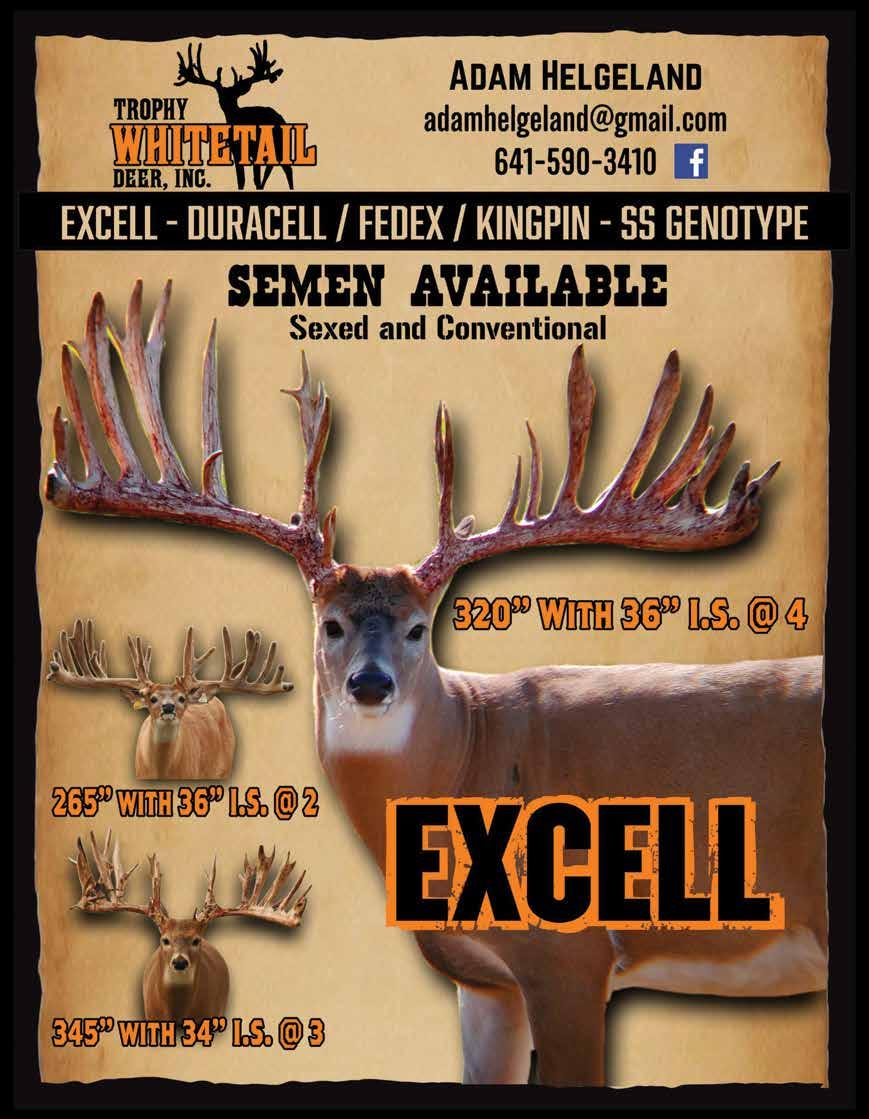
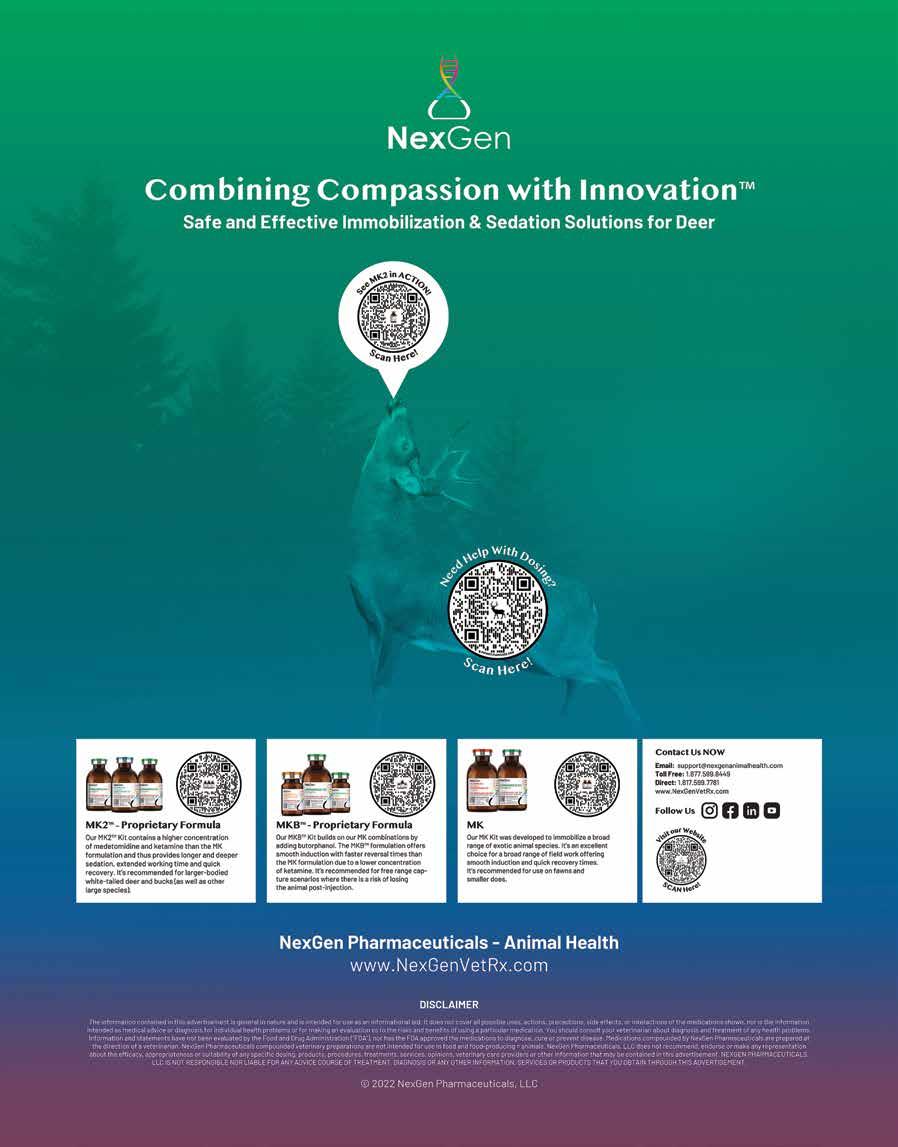
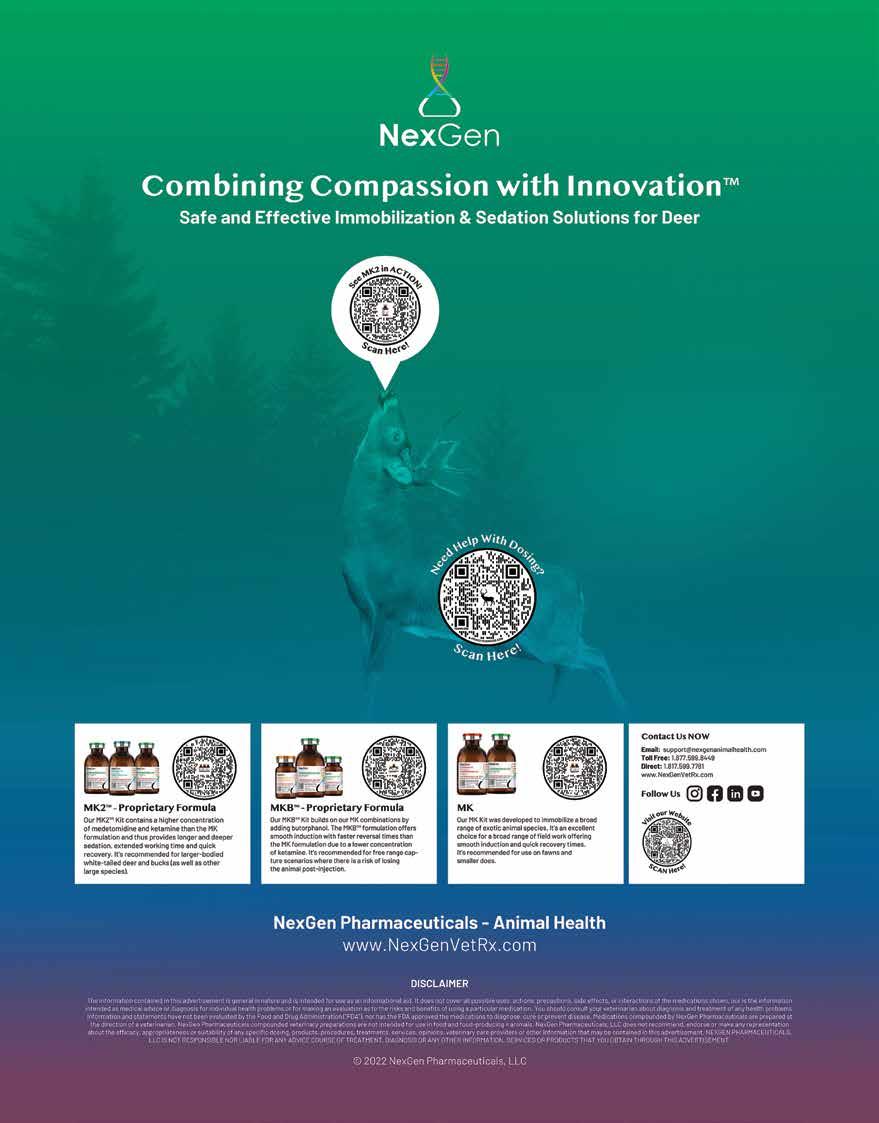
The site of blood on a buck’s antler should mean one thing to any deer farmer. Drop everything and treat it. Whether treatment involves cutting the antlers or administering first aid in the form of antibiotics or topical ointments “don’t push it off until the next day,” said Joe Miller of Kentucky Whitetails, a 17-acre deer farm home to approximately 90 whitetails in Guthrie, Kentucky. “You can’t say ‘I will do it tomorrow.’ The possibility of serious problems or losing that buck to a blood infection is real.”
Although not formally recognized as a predator in the traditional sense, flies can cause blood infections should they lay eggs in an untreated infected antler and maggots result. “If you can control the flies, you have a better chance of avoiding this,” offers Nathan Blosser of Blosser Whitetails, a 50-acre farm with close to 400 whitetail deer in Buffalo, Missouri. Miller and Blosser agree that feeding topical ivermectin on deer feed can be a good defense against maggots as well as a worthwhile proactive health measure.
While injuries such as those caused from feeders or fencing can cause antler damage, shedding season also poses risks if antlers aren’t shed within a day, advised Miller, and recommends all deer farmers own a Callicrate Velvet Antler Bander to safely cut antlers and minimize bleeding for such occasions. “The bigger the antlers, the harder time they have shedding them,” said Miller, 65, a deer farmer since 1999. “If they aren’t shed in a day, flies can get in there and poison them. If so, we dart them when it’s cool, cut the antlers and clean them from the base and leave about three inches. Then we give a heavy dose of ivermectin and a shot of the long-lasting antibiotic Draxxin and sometimes a regular dose of penicillin
on top of it. We also put caustic powder on the ends to help it heal faster. Some farmers like to burn the tips. We’ve never done that.”
Congruently, Blosser, 56, has found in addition to using antibiotics, that Melaluca oil is excellent at deterring flies while penetrating into and cleaning antlers. He also uses Aluma Shield (used traditionally on wounds in horse hooves) that creates an aerosol bandage to protect from outside elements. Although both Blosser and Miller only see infected antlers less than a handful of times each year on their prospective farms, each had more cases earlier on in their deer farming careers.
As a result, Miller, who prefers to raise typicals with a “little extra,” constructed a better feeder with 6 x 6 posts placed ten feet apart accompanied by eight or 10-inch PVC pipe after seeing the antler damage the original one had caused. “Now, if they jerk their head up, they won’t hit anything. Most of the time It’s the drop tines or more non-typical frames that can give you the biggest problems with catching or hitting things,” he added.
Drop tines, combined with reaching under fencing to get to grass can be another major cause of antler damage,
Blosser uses this type of feeder on his deer farm
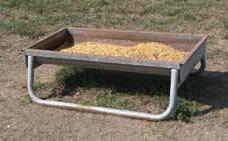

Blosser found, who also prefers to raise typicals with a “little extra.” “So don’t leave your deer in bare pens if there is tempting grass growing right on the other side of it,” he said. “This type of management and prevention is the key to avoiding antler damage along with regularly observing your animals. If caught early enough, an antler infection can show improvement in one day. If not and the infection has become septic, it may take a buck as long as two weeks to be back to normal. Taking action early along with fly control is important in keeping your herd healthy.”
Lastly, no matter how bad you believe an antler infection is “you’ve always got to try and save them,” Miller said. “With all the time and effort put into raising them, it’s always worth trying.”
Nutrient rich formula contains highly bioavailable ingredients, including our proprietary calcium/phosphorous complex with Antler D TM, that are required to support body and bone growth, especially for fast growing bucks
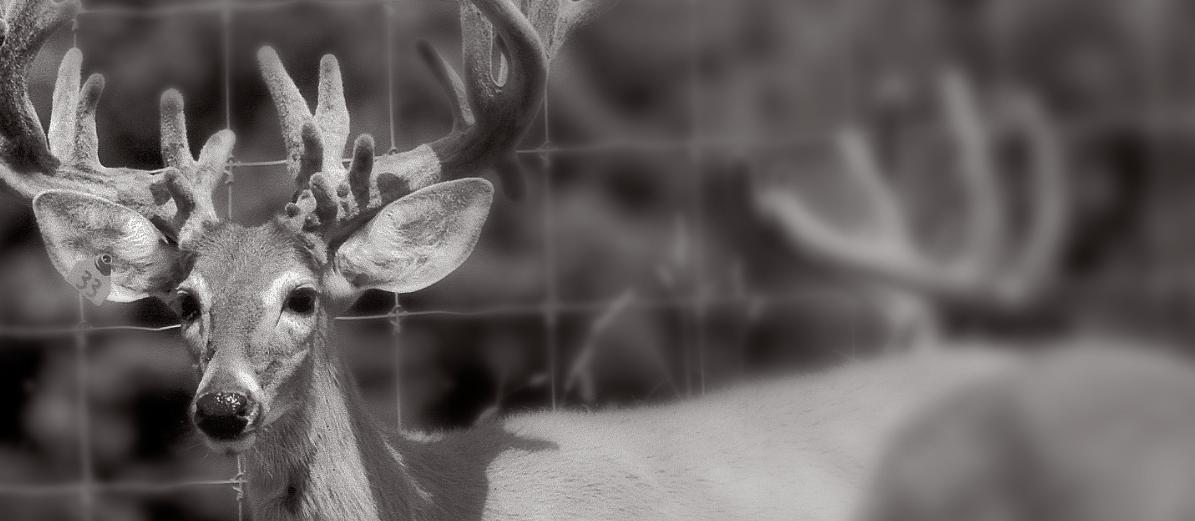
Contains probiotics and targeted enzymes to support gut health and proper digestion
Available in pellet or powder that can be top dressed or mixed in feed. Great for antler growing season and young bucks, too
Provides optimal levels of magnesium, Vitamin B1 and inositol to promote calmness and provide help for restless animals
Contains no herbals, tryptophan or chemicals, eliminating concerns of unwanted side effects
Use PeaceMaker to “keep the peace” during pre-rut, rut, transportation, weaning and anytime destructive behavior may occur

Helps maintain digestive health and productivity
Contains micro-encapsulated probiotics, targeted enzymes and a novel fiber complex
Use in does before fawning, during lactation and all cervids during times of environmental stress
Helps maintain normal digestive health Supports a healthy immune system Feed powder for 14 days to bottle fed fawns Paste is ideal for fawns left on does

